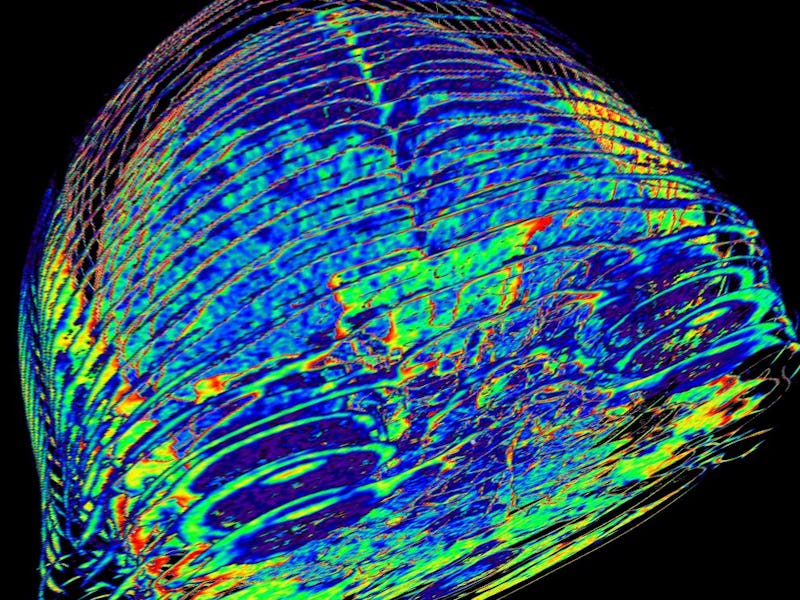LSD Study Reveals Unprecedented "Harmonic" Reorganization of Brain
The drug appears to hit a "reset" button in the brain.

Ongoing neuroscience research on psychedelic drugs like LSD and psilocybin is increasingly demonstrating the healing potential of these substances. In the case of LSD, researchers note in a recent article in Scientific Reports, this healing comes from the drug’s ability to help patients’ brains “reset” connections that cause persistent mental health issues like depression, substance use disorder, and post-traumatic stress disorder.
For people who live with chronic mental illness, the opportunity to reset the brain could be life changing, note the authors.
“I am generally interested in novel therapeutic tools that can help with the healing of psychiatric disorders, especially healing from trauma,” said Selen Atasoy, Ph.D., the first author of the paper and a postdoctoral researcher at the Center for Brain and Cognition at the Universitat Pompeu Fabra in Barcelona in an interview with PsyPost on Tuesday.
“I feel that as Western societies we generally tend to label and marginalise mental illness instead of seeing it as a rather normal reaction to extreme and abnormal circumstances.”
Atasoy and her colleagues used a technique called "connectome-harmonic decomposition" to measure how LSD affects the ways different areas of the brain work together.
In the paper, Atasoy and her team used a unique brain imaging technique to investigate how LSD could help the human brain heal from mental illness. Recent research on the connectome — the theoretical map of all the connections in the brain — has suggested that mental illness stems from unusual patterns of connectivity, and that the healing potential of psychedelic drugs comes from their ability to alter those links. In their study of participants on LSD, the team used a technique called “connectome-harmonic decomposition” to show the ways in which LSD alters connections among and within areas of the brain.
In the study, the authors analyzed fMRI data from 12 participants who were observed on LSD and a placebo. Atasoy says this novel analytical technique could provide new insights into how and why psychedelics alter the way people’s brains function.
“We applied a new analysis, a harmonic decoding of fMRI data, which looks at neural activity in a new way; as a combination of harmonic waves in the brain that we call ‘connectome harmonics’,” Atasoy told PsyPost. “The connectome harmonics we used to decode brain activity, which was first introduced in a Nature Communications publication in 2016, are universal harmonic waves, such as sound waves emerging within a musical instrument, but adapted to the anatomy of the brain, i.e. to the human connectome.”
Under the influence of LSD, subjects’ brains expressed a harmony of functional waves across various areas in a way that was not random. They call this “repertoire expansion,” suggesting that brain areas under the influence of LSD became connected to other areas that they don’t usually work with. Furthermore, the way in which those connections formed was not random but structured, suggesting that the brain was undergoing a reorganizational process rather than building links indiscriminately.
LSD has gained increasing acceptance as the neuroscience community continues to investigate its healing potential.
Though the reorganizational process slowed down as the LSD’s effects wore off, the researchers found that some degree of reorganization persisted in the participants’ brains, often translating to relief from distressing symptoms of mental illness.
Of course, before doctors begin to even think about prescribing LSD to treat mental illness, researchers will first have to determine what exactly the neurological reorganization that occurs during a psychedelic experience entails, how long it lasts, and, perhaps most crucially, how it alters a person’s subjective experience long after the drug’s effects subside.
Abstract: Recent studies have started to elucidate the effects of lysergic acid diethylamide (LSD) on the human brain but the underlying dynamics are not yet fully understood. Here we used ’connectome-harmonic decomposition’, a novel method to investigate the dynamical changes in brain states. We found that LSD alters the energy and the power of individual harmonic brain states in a frequency-selective manner. Remarkably, this leads to an expansion of the repertoire of active brain states, suggestive of a general re-organization of brain dynamics given the non-random increase in co-activation across frequencies. Interestingly, the frequency distribution of the active repertoire of brain states under LSD closely follows power-laws indicating a re-organization of the dynamics at the edge of criticality. Beyond the present findings, these methods open up for a better understanding of the complex brain dynamics in health and disease.